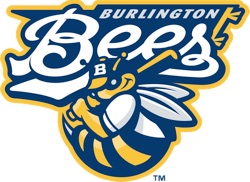 Most of the summer-collegiate leagues are either finished for 2021 or winding down the season. Here’s a first look at and analysis of some numbers.
Most of the summer-collegiate leagues are either finished for 2021 or winding down the season. Here’s a first look at and analysis of some numbers.
When MiLB downsized to 120 teams, 22 formerly affiliated teams migrated to the summer-collegiate game, mostly in the Appalachian and MLB Draft leagues. These two leagues retained a relationship with Major League Baseball, with the Appalachian League also working with USA Baseball.
As we look at the early numbers, it’s important to keep in mind three things. First, three of the major summer-collegiate leagues–the Northwoods League, the Futures League and the West Coast League–are still playing. Second, teams not only needed to transition to new business models, they also needed to do it during a COVID-19 pandemic–a pandemic that’s surely skewed the numbers across all of professional and summer-collegiate baseball.
The third may be the most important. We’ll be looking at two sets of numbers: a per-game average and total attendance. Every team that moved to summer-collegiate ball had to deal with huge declines in total attendance: there’s simply no way for a Burlington Bees or Clinton LumberKings to go from 66 dates when playing in the Low-A Midwest League to 27 dates in the summer-collegiate Prospect League. The loss of those dates means a loss of revenue, even if operating costs did go down.
But, when looking at the aforementioned Bees and LumberKings, the news was not all bad. The LumberKings went from 1,816 fans per game in 2019 to 2,329 fans per game in 2021. (All of attendance comparisons this year will be between 2019 and 2021.) No April and May dates helped those averages, surely, but then again, total attendance was down almost by half because of the loss of so many dates. Similarly, the Batavia MuckDogs went from 784 fans per game in the Short Season A NY-Penn League in 2019 to 1,778 fans per game in the Perfect Game League the year under new management. The numbers were a little worse for the Bees, which went from 1,086 fans per game in 2019 to 896 fans per game in 2021. Still, considering the alternative of folding completely, playing in an summer-collegiate league wasn’t the worst outcome. From the Burlington Hawk Eye:
“I think the season went well,” [Burlington Bees GM Tad] Lowery said. “On the fan side and the community support side, people came out every game better than we expected, the attendance and the enthusiasm of the crowd. A Thursday in 2019 (in the Midwest League) compared to a Thursday this year, we had better attendance (this year). Our promotional nights, our big nights, were more than what we expected.”…
One thing that made the collegiate league easier than the minor league schedules of the past, Lowery said, was the fan support.
“The easier part was getting the fans behind them just because of the way they played and the way they interacted with each other,” Lowery said. “Fans saw the enthusiasm in the dugout. And on the field, the guys were just a little more into it. When the pitcher would come off the mound, everybody was out there right at the foul line, you know, high fives and slaps on the back, saying ‘Great job.’ You know, that kind of stuff. And every home run, the whole dugout was out there greeting him. So I think the fans were able to get more into it, seeing that enthusiasm. The crowd would get into it a little bit more that way.”
Again, we’ll be watching the numbers and reporting them in totality when the 2021 summer-collegiate season ends. There will be a lot of mixed results, to be sure. But given what a horrible year it’s been overall, there are some reasons for optimism moving forward.
